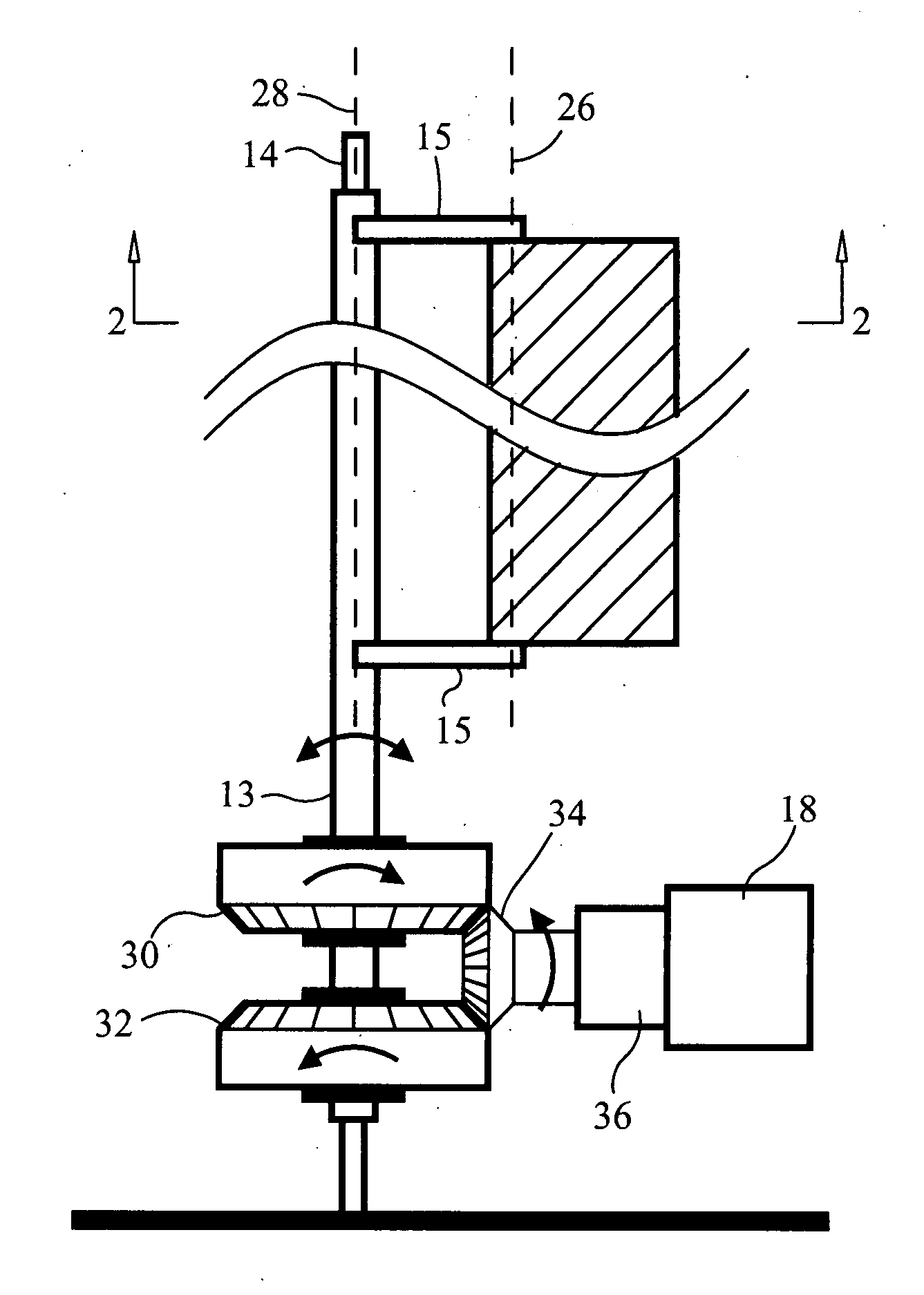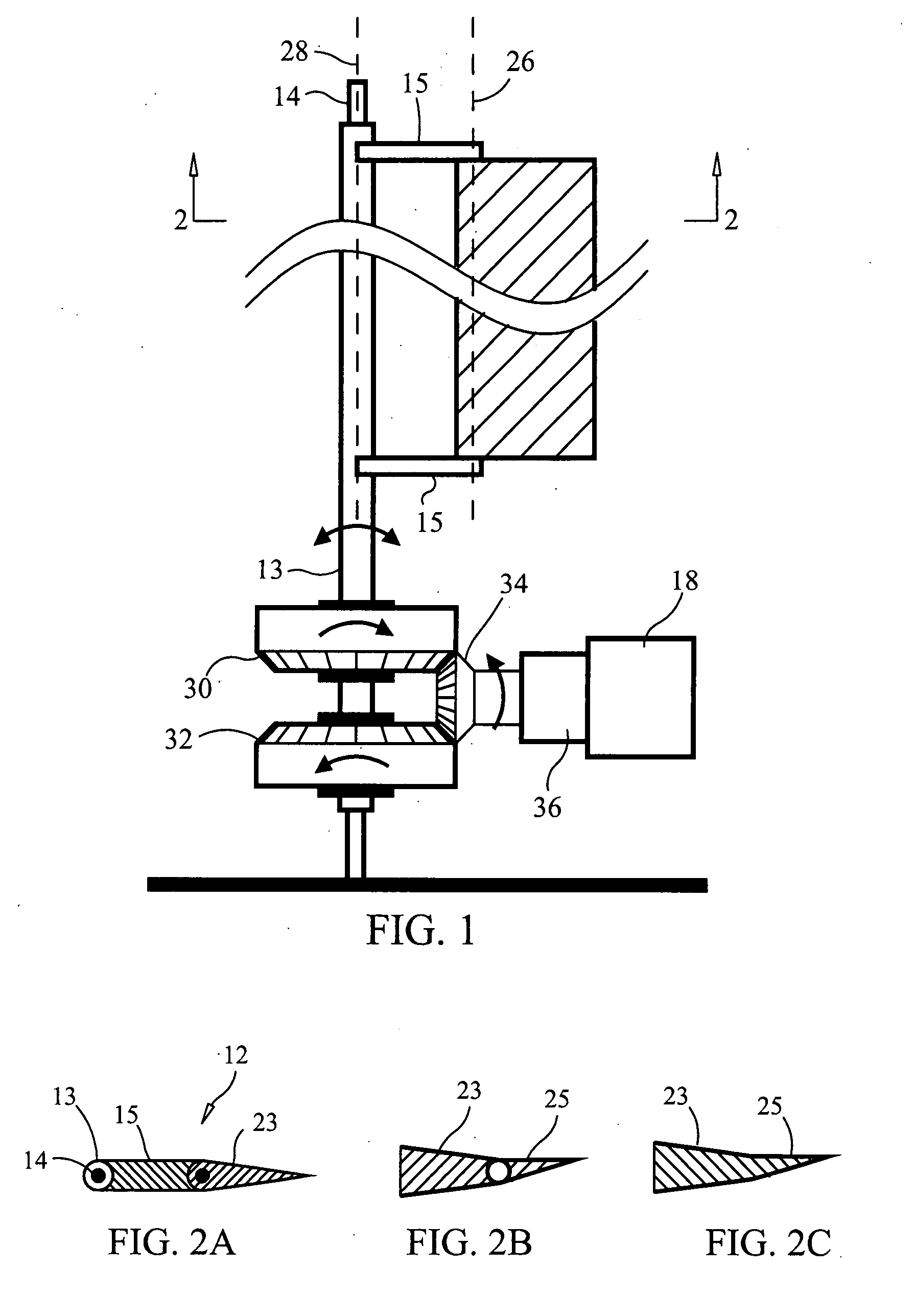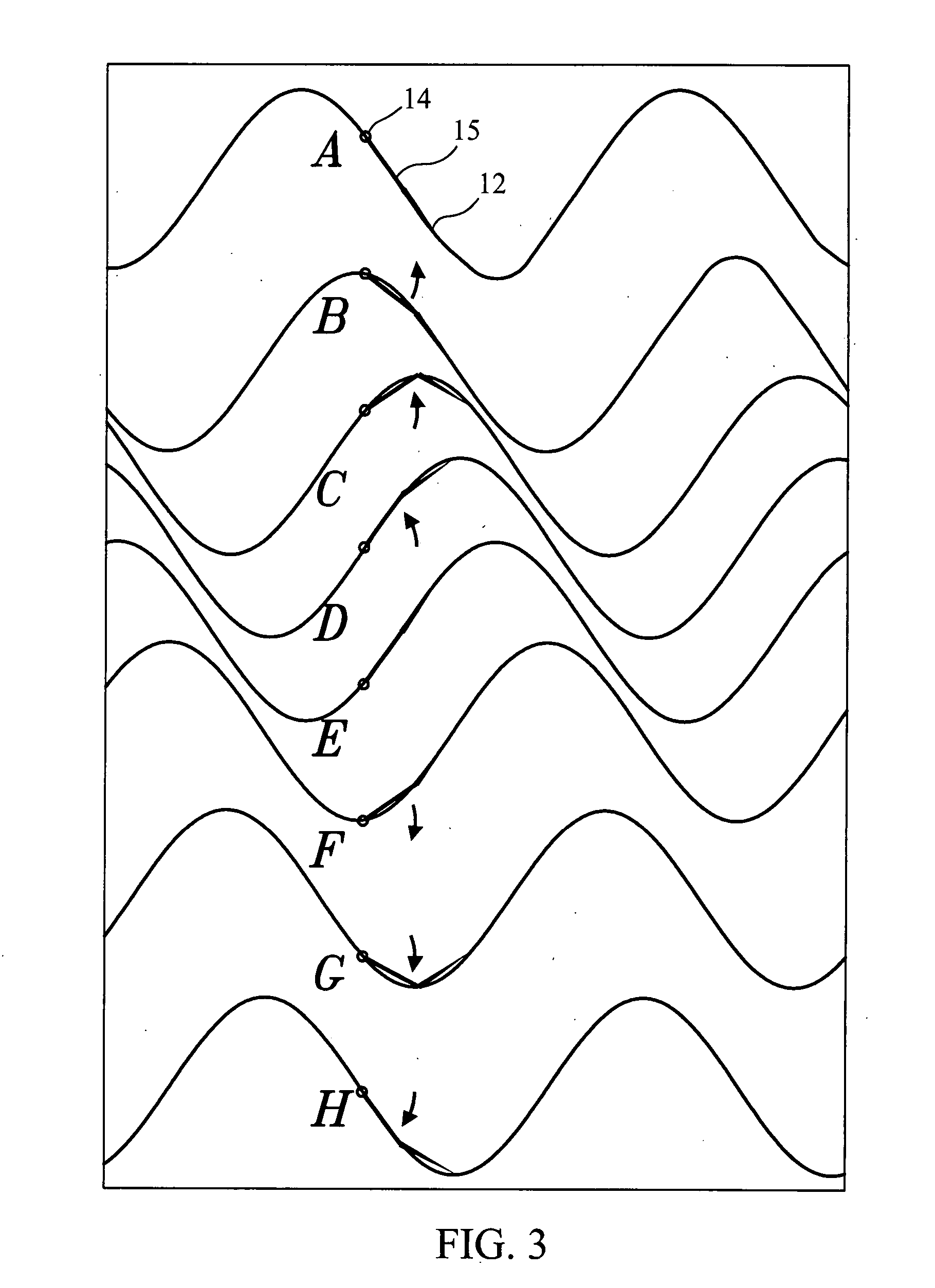Oscillating fluid power generator
a technology of fluid power generator and oscillating fluid, which is applied in the direction of electric generator control, machines/engines, manufacturing tools, etc., can solve the problems of wind power itself being subject to controversy, affecting radio frequency transmission, and unsightly windmills, etc., to increase the technical and economic viability of fluid power generation, reduce the purchase cost of fluid energy systems, and harvest fluid
- Summary
- Abstract
- Description
- Claims
- Application Information
AI Technical Summary
Benefits of technology
Problems solved by technology
Method used
Image
Examples
Embodiment Construction
[0117] Referring to FIG. 1, a preferred embodiment of system 10 is presented. In this embodiment, system 10 comprises wing structure 12, mast 14, power takeoff mechanism 16 and generator 18. Preferably, wing structure 12 comprises body 20 and flap 23 with flap 23 being connected to body 20 by means of hinge 24 having hinge axis 26. Body 20 is preferably fixed to sleeve 13 which rotatably mounted on mast 14, and which oscillates around mast pivot axis 28 during operation of system 10. Power takeoff mechanism 16 preferably comprises two overrunning clutches (clockwise clutch 30 and counterclockwise clutch 32), bevel gear 34 and gearbox 36, although any mechanism for converting oscillating motion into rotary motion would suffice. Generator 20 preferably yaws with the wind direction. The stacked and opposing overrunning clutches 30 and 32 are driven by pinions (not shown) attached to sleeve 13. These clutches in turn drive bevel gear 34. This in turn drives gearbox 36 and motor generato...
PUM
| Property | Measurement | Unit |
|---|---|---|
| angle | aaaaa | aaaaa |
| thick | aaaaa | aaaaa |
| density | aaaaa | aaaaa |
Abstract
Description
Claims
Application Information
 Login to View More
Login to View More - R&D
- Intellectual Property
- Life Sciences
- Materials
- Tech Scout
- Unparalleled Data Quality
- Higher Quality Content
- 60% Fewer Hallucinations
Browse by: Latest US Patents, China's latest patents, Technical Efficacy Thesaurus, Application Domain, Technology Topic, Popular Technical Reports.
© 2025 PatSnap. All rights reserved.Legal|Privacy policy|Modern Slavery Act Transparency Statement|Sitemap|About US| Contact US: help@patsnap.com



